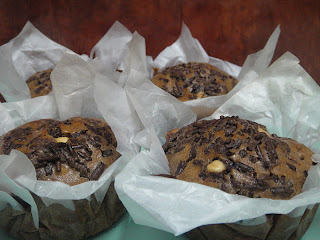If you ask me Dog or Cat? I would say Dog,
If you ask me Action or Romance? I would say Romance,
But, if you ask me Filter Coffee or Instant Coffee, I would say Tea always! Not just for the benefits it posses, but also for its taste.
A cup of Tea, a morning opener, a stress buster, a companion and many more...to make our moments perfect! On a drizzly day or a winter evening, sitting amidst a greeny lawn with your favorite book in one hand and a cup of hot tea in the other...what more can you ask for!

From the 3-Roses Ad. endorsed by Trisha-Vikram, we know that Tea-Drinking is not just a habit, but healthy as well. Believe or not, Tea by nature is rich in flavanoids, amino acids, vitamins (C, E and K), caffeine and polysaccharides. Also, tea drinking has proven to be helpful in cell-mediated immune function of the human body.
With few intricacies added to our regular-tea-making (boil water, add tea dust, milk and sugar), we can make it medicinal for healthy living!
A. Perfect Masala Chai
Its not just chai...but the timely infusion of the leaves in hot water, with the blending of the grounded masala along with milk and sugar, makes it a perfect 'Masala Chai'!
Benefits:
High in Antioxidants
Helps Protect Against Cold & Flu
Helps Restore Mental Alertness or Wakefulness When Experiencing Fatigue
Promotes Healthy Digestion
Alleviates Abdominal Bloatedness, Fullness and Pressure
Aids in Weight Control
For the Masala, you need:
1/4 cup cinnamon, cut into small pieces
1/8 cup cloves
1/4 cup black peppercorns
1/4 cup cardamom
6 black cardamoms
1/4 cup mace (javantri), broken into pieces
1/2 nutmeg (grated)
1/4 cup dried ginger powder (Chukku)
a pinch of fennel seeds
Method:
1. Mildly roast all the above for a minute, cool and grind to powder form
2. Store in air tight container, in refrigerator
3. Life time upto 3 months.
Making the Chai -
Ingredients:
Milk - 1cup
Water - 1 1/2 cups
Tea Leaves - 2 1/2 tsp
Chai Masala - 1/2 tsp
Sugar to taste
Method:
1. Bring Water to boil and add the tea leaves
2. Now, when the leaves are infused, add the milk and chai masala
3. When tea raises in the pot, add sugar and simmer for 2 minutes and filter to cup
4. Masala Chai is ready to be served
(Pour tea back and forth between the pot and the cup once, to make the froth)
B. Pudhina (Mint) Tea
Benefits:
Improves digestion, helps recover indigestion, and daily intake after meals helps Weight Control
Method:
1. Bring Water to boil and add the tea leaves
2. Now, when the leaves are infused, add the milk and fresh mint leaves
3. When tea raises in the pot, add sugar and simmer for 2 minutes and turn it off
4. Allow it to stand in the pot for 1 more minute and then filter to the cup
(Note: Pudhina Tea wihout Tea leaves, milk and sugar is more effective i.e. only the pudhina leaves infused in hot water)
C. Ginger & Pepper Tea
Benefits:
Good for digestion, helps recover from common cold, and acts soothing on the affected throat
Method:
1. Bring Water to boil and add 1-2 cm sized peeled-crushed ginger/ or 3 crushed pepper corns/ or a combination of both
2. Now add the tea leaves and 1 crushed cardamom
3. When the leaves are fully infused, add milk
4. When tea raises in the pot, add sugar and simmer for 2 minutes and turn it off and serve
D. Omani Tea
Omani Cuisine means richness, in all its recipes. Whether it be a simple bread or rice, each recipe will be rich in its own kind. Likewise, their tea has no exception! The Omani Tea with its unique aroma and ditinguishing flavor redefines the usual or original taste of tea.
Benefits:
Presence of Oregano makes it high in Antioxidant vitamins and antibacterial as well
Saffron is a golden spice that provides numerous medicinal benefits
Helps Restore Mental Alertness or Wakefulness
Ingredients:
Milk - 1cup
Water - 1 1/2 cups
Tea Leaves - 2 1/2 tsp (Preferably Mumtaz Tea, Omani)
Saffron - a pinch
Rose Water - 1/4 tsp
Oregano - a pinch
Cardamom - 2 Nos.
Sugar to taste
Method:
1. Bring Water to boil and add the tea leaves
2. Now, when the leaves are infused, add the milk and crushed cardamom
3. When tea raises in the pot, add sugar, saffron, Rose Water and Oregano, and simmer for 2 minutes & turn it off
4. Allow it to stand in the pot for 1 more minute and then filter to the cup
(Note: Like all other beverages/medicines, even tea has its own negative effects. So for better results and healthy living, consume Tea in limited & controlled quantities, without becoming addicted to it!)
















